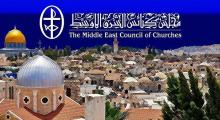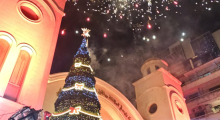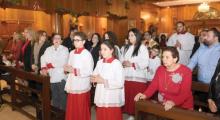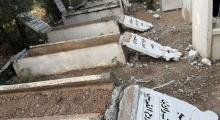Issued by the Catholic Center for Studies and Media - Jordan. Editor-in-chief Fr. Rif'at Bader - موقع أبونا abouna.org
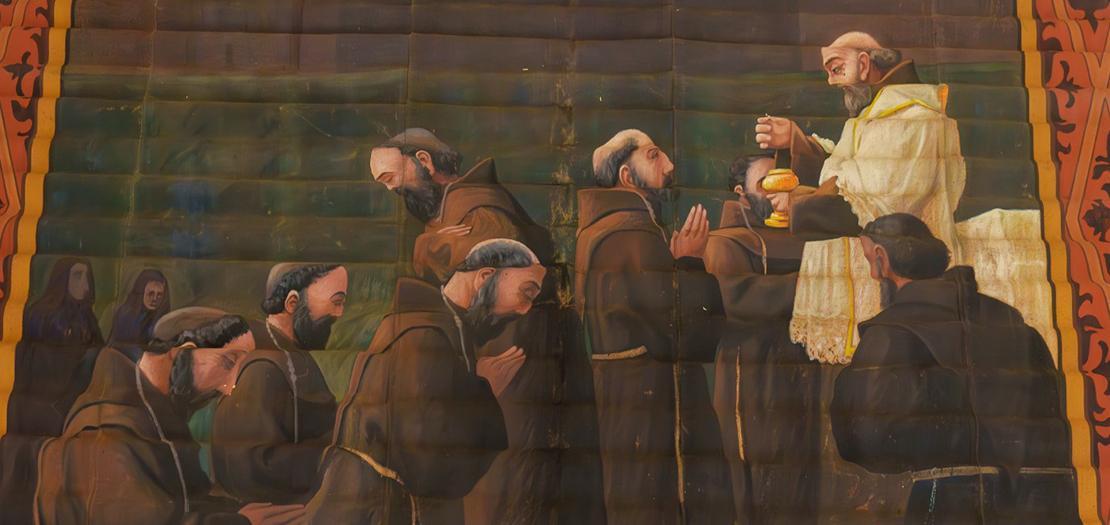
In view of the imminent canonization of the Martyrs of Damascus on 20 October, the original large canvases which were used at St Peter’s on their beatification – almost a century ago, on 10 October 1926 – were unrolled and opened again in the main hall of the Curia of the Custody on 24 July.
The five large frescoed canvases, kept in the Custody’s stores, revealed the faces of the eleven martyrs – of whom 7 were Spanish friars, one Tyrolese and three Maronites - whose ultimate sacrifice took place in Damascus in the night between 9 and 19 July 1860, during the persecution of the Christians by the Shiite Druse in Lebanon and Syria.
The canvases probably arrived in Jerusalem immediately after the solemn celebration of beatification at St Peter’s.
Excellent state of preservation
“It is surprising to see the excellent state of preservation with which these canvases have come down to us today, as well as the high quality of the images painted,” commented Fra Rodrigo Machado Soares, guardian of St Saviour and a member, together with Fra Ulise Zarza and Fra Narciso Klimas, of the Committee for the preparation of the celebrations for the canonization of the Martyrs. “These works represent rare and very important historic evidence and emphasize the most important moments in the history of the Franciscan friars.”
The scenes illustrated on the canvases
“Of these 5 canvases,” Fra Rodrigo continued, “the most important one is the one that from the archive photo we recognize as having been placed in the centre of the precious golden frame of the halo of the Holy Spirit, behind the Great Altar by Bernini. At that time, the beatifications took place in the Basilica. This canvas represents the eleven men, some holding the palms of martyrdom, gathered around the glorious cross.”
A “twin” canvas, with the same subject but with a large frescoed frame, was made for the external balcony.
Of the other canvases, displayed inside, three show different scenes of the martyrdom. The first shows the assault on the Franciscan convent in the Christian quarter of Bab-Touma by the Druse, due to a traitor who opened the gate.
The last Eucharist
For the touching scene in which Fra Manuel Ruiz, guardian of the convent, offers the last Eucharist to his brothers, with the intention of consuming the Eucharistic species and avoiding their profanation, but at the same time of strengthening their spirit before death. “Here the friars are recognized as penitents,” Fra Rodrigo underlined, “with a rope around their necks, while they consume their last Communion.”
On the lower base, it says in large letters: “summo instante vitae discrimine coenobii praeses congregatos in templo sodales nonnullosque fideles hortartur ad vitam strenue pro christo cum sanguine fundendam eosque caelesti pane fortium corroborat” (In the most urgent crisis of life, the head of the Synod exhorts the members and some faithful gathered in the temple to give their life for Christ vigorously with blood, and confirms them with the celestial bread of the strong”).
Finally, on the last canvas, we can see the actual moment of the martyrdom: some friars were massacred, others decapitated and two of them were thrown off the bell-tower.
Father Manuel Ruiz wrote to the Custody of the Holy Land on 2 July 1860, informing him of the foreseeable symptoms of the imminent disaster. “The climax of the letter,” said Fra Rodrigo, “hágase la voluntad del Señor» (“May the Lord’s will be done”) shows the acceptance of death and this will be the motto of the logo for their canonization.”



